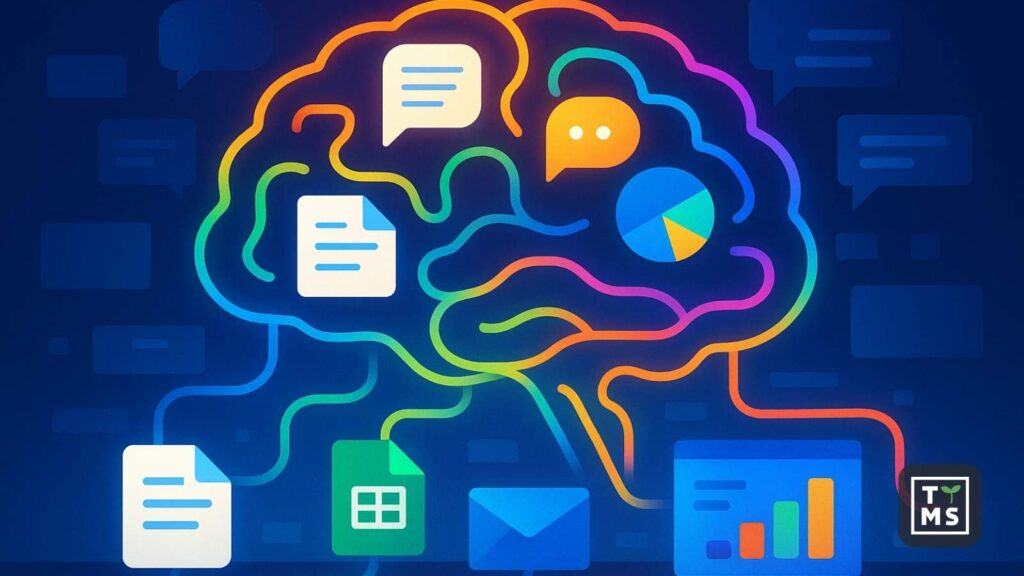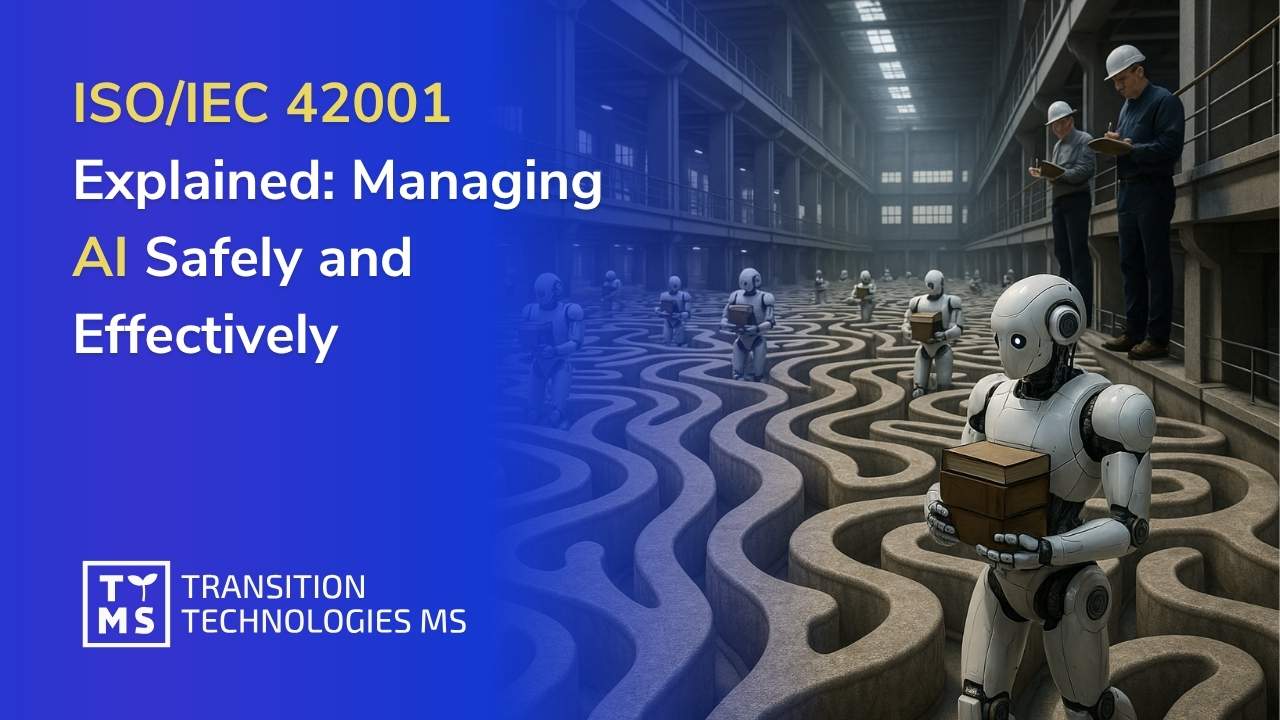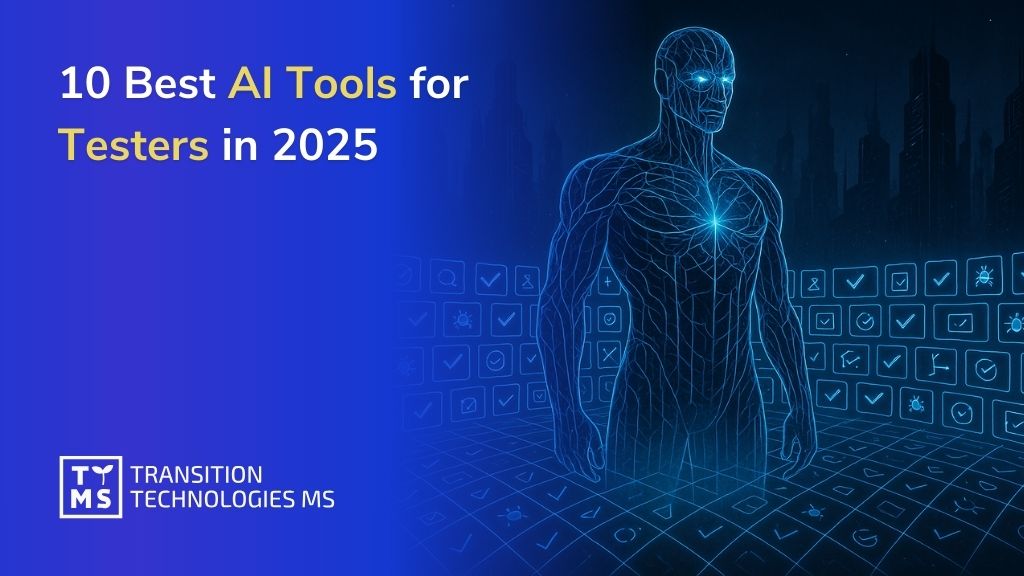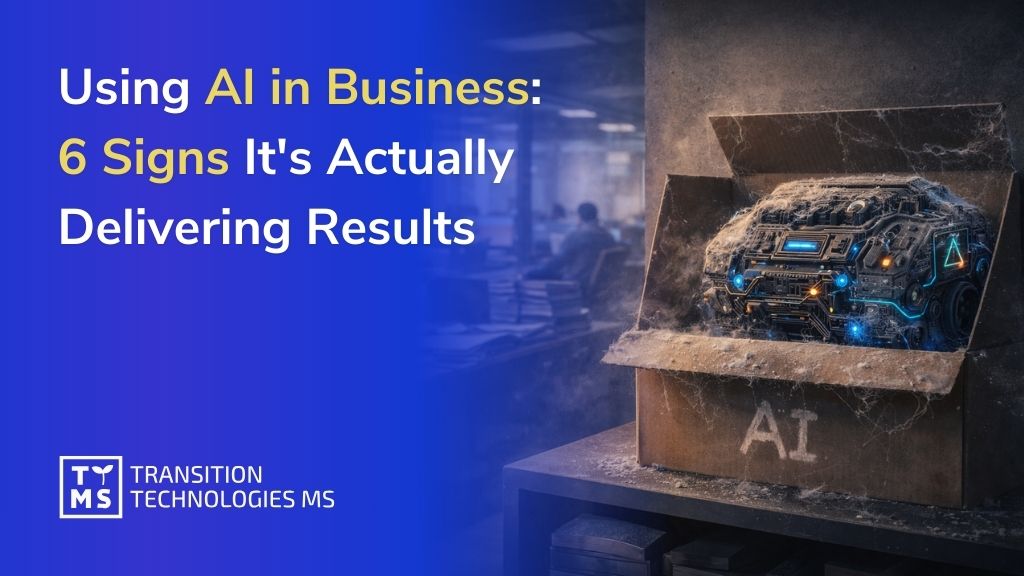Google Gemini vs Microsoft Copilot: AI Integration in Google Workspace and Microsoft 365
Businesses today are exploring generative AI tools to boost productivity, and two major players have emerged in office environments: Google’s Gemini (integrated into Google Workspace) and Microsoft 365 Copilot (integrated into Microsoft’s Office suite). Both offer AI assistance within apps like documents, emails, spreadsheets, and meetings – but how do they compare in features, integration, and pricing for enterprise use? This article provides a business-focused comparison of Google Gemini and Microsoft Copilot, highlighting what each brings to the table for Google Workspace and Microsoft 365 users.

Google Gemini in Workspace: Overview and Features
Google Gemini for Workspace (formerly known as Duet AI for Workspace) is Google’s generative AI assistant built directly into the Google Workspace apps. In early 2024, Google rebranded its Workspace AI add-on as Gemini, integrating it across popular apps such as Gmail, Google Docs, Sheets, Slides, Meet, and more. This means users can invoke AI help while writing emails or documents, brainstorming content, analyzing data, or building presentations. Google is even providing a standalone chat interface where users can “chat” with Gemini to research information or generate content, with all interactions protected by enterprise-grade privacy controls.
Capabilities: Google envisions Gemini as an “always-on AI assistant” that can take on many roles in your workflow. For example, Gemini can act as a research analyst (spotting trends in data and synthesizing information), a sales assistant (drafting custom proposals for clients), or a productivity aide (helping draft, reply to, and summarize emails). It also serves as a creative assistant in Google Slides, able to generate images and design ideas for presentations, and as a meeting note-taker in Google Meet to capture and summarize discussions. In fact, the enterprise version of Gemini can translate live captions in Google Meet meetings (in 100+ languages) and will soon even generate meeting notes for you – a valuable feature for global teams. Across Google Docs and Gmail, Gemini can help compose and refine text; in Sheets it can generate formulas or summarize data; in Slides it can create visual elements. Essentially, it brings the power of Google’s latest large language models into everyday business tasks in Workspace.
Data privacy and security: Google emphasizes that Gemini’s use in Workspace meets enterprise security standards. Content you generate or share with Gemini is not used to train Google’s models or for ad targeting, and Google upholds strict data privacy commitments for Workspace customers. Gemini only has access to the content that the user working with it has permission to view (for example, it can draw context from a document you’re editing or an email thread you’re replying to, but not from files you haven’t been granted access to). All interactions with Gemini for Workspace are kept confidential and protected, aligning with Google’s compliance certifications (ISO, SOC, HIPAA, etc.) – an important consideration for large organizations.
Pricing: Google offers Gemini for Workspace as an add-on subscription on top of standard Workspace plans. There are two tiers aimed at businesses of different sizes:
- Gemini Business – priced around $20 per user per month (with an annual commitment). This lower-priced tier is designed to make generative AI accessible to small and mid-size teams. It provides Gemini’s core capabilities across Workspace apps and access to the standalone Gemini chat experience.
- Gemini Enterprise – priced around $30 per user per month (annual commitment). This tier (which replaced the former Duet AI Enterprise) is geared for large enterprises and heavy AI users. It includes all Gemini features plus enhanced usage limits and additional capabilities like the AI-powered meeting support (live translations and automated meeting notes in Meet). Enterprise subscribers get “unfettered” access to Gemini’s most advanced model (at the time of launch, Gemini 1.0 Ultra) for high volumes of queries.
It’s worth noting that these Gemini add-on subscriptions come in addition to the regular Google Workspace licensing. For comparison, Google also introduced generative AI features for individual users via a Google One AI Premium plan (branded as Gemini Advanced for consumers) at about $19.99 per month. However, for the purpose of this business-focused comparison, the Gemini Business and Enterprise plans above are the relevant offerings for organizations.

Microsoft 365 Copilot: Overview and Features
Microsoft’s answer to AI-assisted work is Microsoft 365 Copilot, which brings generative AI into the Microsoft 365 (Office) ecosystem of apps. Announced in 2023, Copilot is powered by advanced OpenAI GPT-4 large language models working in concert with Microsoft’s own AI and data platform. It is embedded in the apps millions of users work with daily — Word, Excel, PowerPoint, Outlook, Teams, and more — appearing as an assistant that users can call upon to create content, analyze information or automate tasks within these familiar applications.
Capabilities: Microsoft 365 Copilot is deeply integrated with the Office suite and Microsoft’s cloud. In Word, Copilot can draft documents, help rewrite or summarize text, and even suggest improvements to tone or style. In Outlook, it can draft email replies or summarize long email threads to help you inbox-zero faster. In PowerPoint, Copilot can turn your prompts into presentations, generate outlines or speaker notes, and even create imagery or design ideas (leveraging OpenAI’s DALL·E 3 for image generation). In Excel, it can analyze data, generate formulas or charts based on natural language queries, and provide insights from your spreadsheets. Microsoft Teams users benefit as well: Copilot can summarize meeting discussions and action items (even for meetings you missed) and integrate with your calendar and chats to keep you informed. In short, Copilot acts as an AI assistant across Microsoft 365, whether you’re writing a report, crunching numbers, or collaborating in a meeting.
One standout feature of Copilot is how it can ground its responses in your business data and context. Microsoft 365 Copilot has access (with proper permissions) to the user’s work content and context via the Microsoft Graph. This means when you ask Copilot something in a business context, it can reference your recent emails, meetings, documents, and other files to provide a relevant answer. Microsoft describes that Copilot “grounds answers in business data like your documents, emails, calendar, chats, meetings, and contacts, combined with the context of the current project or conversation” to deliver highly relevant and actionable responses. For example, you could ask Copilot in Teams, “Summarize the status of Project X based on our latest documents and email threads,” and it will attempt to pull in details from SharePoint files, Outlook messages, and meeting notes that you have access to. This Business Chat capability, connecting across your organization’s data, is a powerful asset of Copilot in an enterprise setting. (By contrast, Google’s Gemini focuses on assisting within individual Google Workspace apps and documents you’re actively using, rather than searching across all your company’s content – at least in current offerings.)
Security and privacy: Microsoft has built Copilot with enterprise security, compliance, and privacy in mind. Like Google, Microsoft has pledged that Copilot will not use your organization’s data to train the public AI models. All the data stays within your tenant’s secure boundaries and is only used on-the-fly to generate responses for you. Copilot is integrated with Microsoft’s identity, compliance, and security controls, meaning it respects things like document permissions and DLP (Data Loss Prevention) policies. In fact, Microsoft 365 Copilot is described as offering “enterprise-grade security, privacy, and compliance” built-in. Businesses can therefore control and monitor Copilot’s usage via an admin dashboard and expect that outputs are compliant with their organizational policies. These assurances are crucial for large firms, especially those in regulated industries, who are concerned about sensitive data leakage when using AI tools.
Pricing: Microsoft 365 Copilot is provided as an add-on license for organizations using eligible Microsoft 365 plans. Microsoft has set the price at $30 per user per month (when paid annually) for commercial customers. In other words, if a company already has Microsoft 365 E3/E5 or Business Standard/Premium subscriptions, they can attach Copilot for each user at an additional $30 per month. (Monthly billing is available at a slightly higher equivalent rate of $31.50, with an annual commitment.) This pricing is broadly similar to Google’s Gemini Enterprise tier. Unlike Google, Microsoft does not offer a lower-cost business tier for Copilot – it’s a one-size-fits-all add-on in the enterprise context. However, Microsoft has been piloting Copilot for consumers and small businesses in other forms: for instance, some AI features are being included in Bing (free for work with Bing Chat Enterprise) and in late 2024 Microsoft also introduced a Copilot Pro plan for Microsoft 365 Personal users at $20 per month to get enhanced AI usage in Word, Excel, etc. Still, the $30/user enterprise Copilot is the flagship offering for organizations looking to leverage AI in the Microsoft 365 suite.

Integration and Feature Comparison
Both Google Gemini and Microsoft Copilot share a common goal: to embed generative AI deeply into workplace tools, thereby helping users work smarter and faster. However, there are some differences in how each one integrates and the unique features they provide:
- Supported Ecosystems: Unsurprisingly, Gemini is limited to Google’s Workspace apps, and Copilot is limited to Microsoft 365 apps. Each is a strategic addition to its own cloud productivity ecosystem. Companies that primarily use Google Workspace (Gmail, Docs, Drive, etc.) will find Gemini to be a natural fit, while those on Microsoft’s stack (Office apps, Outlook/Exchange, SharePoint, Teams) will gravitate toward Copilot. Neither of these AI assistants works outside its parent ecosystem in any meaningful way at the moment. This means the choice is often straightforward based on your organization’s existing software platform – Gemini if you’re a Google shop, Copilot if you’re a Microsoft shop.
- In-App Assistance: Both solutions offer in-app AI assistance via a sidebar or command interface within the familiar productivity apps. For example, Google has a “Help me write” button in Gmail and Docs that triggers Gemini to draft or refine text. Microsoft has a Copilot pane that can be opened in Word, Excel, PowerPoint, etc., where you can type requests (e.g., “Organize this draft” or “Create a slide deck from these bullet points”). In both cases, the AI’s suggestions appear in the app for you to review, edit, or insert into your work. This seamless integration means users don’t have to leave their workflow to use the AI – it’s right there in the document or email they’re working on. Both Gemini and Copilot can also adjust their outputs based on user feedback (you can ask for rewrites, shorter/longer versions, different tones, and so on).
- Chatbot Interface: In addition to the contextual help inside documents, both provide a more general chat interface for interacting with the AI. Google’s Gemini has a standalone chat experience (accessible to Workspace users with the add-on) where you can ask open-ended questions or brainstorm in a way similar to using a chatbot like Bard or ChatGPT, but with the added benefit of enterprise data protections. Microsoft similarly offers a Business Chat experience via Copilot (often surfaced through Microsoft Teams or the Microsoft 365 app), which allows users to converse with the AI and ask for summaries or insights that span their work data. The key difference is data connectivity: Microsoft’s Copilot chat can pull from your work files and communications (with permission) to answer questions like “Give me a summary of Q3 project status across all our team’s files”, whereas Google’s Gemini chat is currently more of a general AI assistant that does not automatically traverse all your Google Drive or Gmail content unless you explicitly provide it with text or data. Both approaches are useful – Google’s is more about general knowledge, writing, and brainstorming with privacy, and Microsoft’s is about querying your organizational knowledge bases and context.
- External Information and Plugins: Microsoft Copilot leverages Bing for web search when needed, so it can incorporate up-to-date information from the internet in its responses. This is useful for questions that involve current events or knowledge not contained in your documents (e.g., asking for market research data or latest news within a Word doc draft). Google Gemini is integrated with Google’s search in some experiences and can also utilize Google’s vast information graph when you ask it general questions. In terms of third-party extensions, both platforms are evolving: Microsoft has demonstrated plugins and connectors for Copilot (for example, integrating Jira or Salesforce data, and even using OpenAI plugins for things like shopping or travel bookings in Chat mode). Google’s Gemini likewise can integrate with some of Google’s own services (YouTube, Google Maps, etc., via Bard’s extensions) and is likely to expand its third-party integration through Google’s AppSheet and APIs. For a business user, these integrations mean the AI can eventually help with more than just Office documents – it could assist with pulling in data from other enterprise tools or performing actions (like scheduling a meeting, initiating a workflow, etc.) as these ecosystems mature.
- Multimodal Abilities: Both Google and Microsoft are incorporating multimodal AI capabilities into their productivity suites. This means the AI can handle not just text, but also images (and potentially audio/video) as input or output. Google’s Workspace AI can generate images on the fly in Slides using its Imagen model (for example, “create an illustration of a growth chart” and it will insert a generated graphic). Microsoft 365 Copilot uses OpenAI’s DALL·E 3 for image generation in tools like Designer and PowerPoint, allowing users to create custom images from prompts within their slides or design materials. Both can also summarize or analyze images to some extent (like Google’s mobile app can summarize a photo of a document, Microsoft’s AI can describe an image, etc.). In meetings, Google’s Meet can transcribe spoken content and translate it live (leveraging Google’s speech and translation AI), while Microsoft Teams with Copilot can produce meeting transcripts and summaries (and will likely integrate language translation in the future). These multimodal features are still growing, but they hint at a future where your AI assistant can handle diverse content types in your workflow.
- AI Performance and Models: Under the hood, Microsoft Copilot is largely powered by the GPT-4 model from OpenAI (augmented by Microsoft’s own “graph” and reasoning engines), whereas Google Gemini is powered by Google’s Gemini family of models (the successors to Google’s PaLM 2/Bard models). Both are cutting-edge large language models with high capabilities in understanding and generating natural language. It’s difficult to say which has the absolute advantage – these models are continuously improving. In some benchmarks, Google’s latest Gemini model has shown strengths in certain tasks (e.g. retrieving specific info from large text corpora), while GPT-4 has been the industry leader in many language tasks. For the end user in a business context, both systems are extremely capable at things like drafting coherent text, summarizing, and following complex instructions. The context window (how much content they can consider at once) is one differentiator mentioned: Gemini’s models reportedly support a very large context (up to 1 million tokens in some versions), whereas GPT-4 (as used in Copilot) supports up to 128k tokens in its 2024 edition. In practical terms, this means Gemini might handle larger documents or data sets in a single query. However, either AI will still have some limits and will summarize or condense information if you throw an entire knowledge base at it.
- Enterprise Readiness: Both Google and Microsoft have designed these AI tools with enterprise deployability in mind. They offer admin controls, user management, and compliance logging for actions the AI takes. Microsoft has a Copilot Dashboard for business admins to monitor usage and impact. Google similarly allows admins to enable or restrict Gemini features and has plans for sector-specific compliance (they mentioned bringing Gemini to educational institutions with appropriate safeguards). Another aspect of enterprise readiness is support and liability: Microsoft has stated it provides copyright indemnification for Copilot’s outputs for commercial customers (meaning if Copilot inadvertently generates content that infringes IP, Microsoft offers some legal protection) – Google has matched this by offering indemnification for Gemini Enterprise customers as well. This is a key detail for large companies creating public content with AI. Both companies are clearly positioning their AI assistants to be safe, managed, and responsible for business use.
Pricing and ROI Considerations
Deploying generative AI at scale in a company comes with a cost. As outlined, Google’s Gemini Enterprise and Microsoft 365 Copilot are similarly priced, each around $30 per user per month for enterprise-grade service. Google’s Gemini Business plan offers a slight discount at $20 per user for smaller teams, which could be attractive for mid-market companies or initial pilots. Microsoft thus far has kept a single $30 tier for its business Copilot. In both cases, these fees are add-ons on top of existing Google Workspace or Microsoft 365 subscription costs, so organizations need to budget accordingly. For a large enterprise with thousands of seats, we are talking millions of dollars per year in AI licensing if rolled out company-wide.
The key question for ROI (return on investment) is: Do these AI tools save enough time or create enough value to justify the cost? Both Google and Microsoft are making the case that they do. Microsoft has published early case studies claiming that Copilot can significantly improve productivity – for example, a commissioned study found an estimated 116% ROI over three years and 9 hours saved per user per month on average by using Microsoft 365 Copilot. Such time savings come from automating tedious tasks like drafting emails, analyzing data, and creating first drafts of content, thereby freeing employees to focus on higher-value work. Google has shared anecdotal examples of companies using Gemini to reduce writing time by over 30% in customer support emails and to accelerate research tasks for analysts. While individual results will vary, it’s clear that even a few hours saved per employee each month can add up to substantial value when scaled across an entire organization. For instance, if an AI assistant saves an employee 5–10% of their working hours, the productivity gain could outweigh the ~$30 monthly fee in many cases (considering the cost of employee time).
Cost management: Enterprises might choose to roll out these AI tools to specific departments or roles first – for example, to content writers, marketing teams, customer support, or software developers – where the immediate impact is greatest. Both Google and Microsoft allow flexible licensing in that you don’t have to buy it for every single user; you can assign the add-on to those who will benefit most and expand gradually. This targeted deployment can help evaluate effectiveness and control costs. Additionally, because both vendors require an annual commitment for the best pricing, organizations will want to trial the AI (both had early free trials or pilot programs) before committing. Google Workspace admins can try Gemini add-ons in a trial mode or use a 14-day Workspace trial for new domains, and Microsoft has had preview programs for Copilot with select customers before broad release.
Finally, beyond the subscription fees, businesses should consider the change management and training aspect. To truly get ROI, employees will need to learn how to use Gemini or Copilot effectively (e.g. how to prompt the AI, how to review and fact-check its outputs, etc.). Both Google and Microsoft have been building in-app guidance and examples to help users get started, and investing a bit in training sessions or pilot user feedback can go a long way. The good news is that these tools are designed to be intuitive — if you can tell a colleague what you need, you can likely ask the AI in a similar way — so adoption is expected to be relatively quick. Still, companies should foster a culture of “AI augmentation” where employees understand that the AI is there to assist, not replace, and output should be verified especially for important or external-facing content.
Conclusion: Which One Should Your Business Choose?
For large companies evaluating Google Gemini vs. Microsoft Copilot, the decision will primarily hinge on your current ecosystem and specific needs:
- Existing Ecosystem: If your organization is already deeply using Google Workspace, then Gemini will plug in seamlessly to enhance Gmail, Docs, Sheets, and your Google Meet experience. Conversely, if you run on Microsoft 365, Copilot is the natural choice to supercharge Word, Excel, Outlook, Teams, and more. Each AI assistant works best with its own family of apps and data. Switching ecosystems just for the AI features is usually not practical for most enterprises, so you’ll likely adopt the one that matches your environment.
- Features and Use Cases: There is a high overlap in capabilities – both can draft content, summarize text, create presentations, and analyze data. However, subtle differences might matter. Microsoft Copilot’s strength is leveraging your internal data context (emails, files, chats) in its responses, which can be incredibly useful for comprehensive organizational queries or assembling info from different sources automatically. Google’s Gemini shines in simplicity and creative tasks like quick email drafts, document generation and image creation, and benefits from Google’s prowess in things like language translation and its massive search knowledge base. If your workflows involve a lot of Google Meet meetings or multi-language collaboration, Gemini’s built-in translation and note-taking could be a killer feature. If your teams juggle a lot of Microsoft Teams meetings, SharePoint files and Outlook threads, Copilot’s ability to draw context from all those may prove more valuable.
- Cost: Both are premium offerings at roughly $30/user. Google’s cheaper $20/user tier could tip the scale for budget-conscious teams who might not need the full breadth of features (e.g., a small business might start with Gemini Business at $20). Large enterprises, however, will likely evaluate the top-tier versions of each. In terms of value, it’s essentially equal at the high end – neither Google nor Microsoft is significantly undercutting the other on price for enterprise AI. It may come down to where you can get a better overall deal as part of your broader enterprise agreement with the vendor.
- Maturity and Support: Microsoft 365 Copilot, having been released earlier (general availability in late 2023), might be considered a bit more mature in some aspects, and Microsoft has been aggressively improving it (including adding DALL-E 3 for images, Copilot Studio for building custom AI plugins, etc.). Google’s Gemini for Workspace became broadly available in 2024 and is rapidly evolving, with Google’s equally aggressive investment in AI R&D behind it. Both giants have roadmaps to continue expanding AI capabilities. When choosing, you might consider the pace of updates and support – e.g., Microsoft’s close partnership with OpenAI means it often gets the latest model improvements; Google’s full control of Gemini means it can optimize the AI for Workspace needs (like those huge context windows and deep integrations with Google services). Evaluate which platform’s AI vision aligns more with your company’s future needs (for instance, if you plan to build custom AI agents, Microsoft’s Copilot Studio vs Google’s AI APIs could be a factor).
In the end, adopting generative AI in the workplace is poised to be a transformative move for many organizations. Both Google Gemini and Microsoft Copilot represent the cutting edge of this trend – embedding intelligent assistance into the everyday tools of business. Early adopters have reported faster content creation, more insightful data analysis, and time saved on routine tasks. From a competitive standpoint, if your rivals are empowering their employees with AI, you won’t want to fall behind. The good news is that whether you choose Google’s or Microsoft’s solution, you’re likely to see a boost in productivity and innovation. The choice is less about one being “better” than the other in absolute terms, and more about which one fits your business. A Google Workspace-based enterprise will find Gemini to be a natural extension of their workflows, while a Microsoft-centered enterprise will find Copilot to be an invaluable colleague in every Office app.
Both Gemini and Copilot will continue to learn and improve, and as they do, they’ll further blur the line between human work and AI assistance. By carefully evaluating their offerings and aligning with your strategic platform, your company can harness this new wave of AI to empower your teams, drive efficiency, and unlock creativity – all while maintaining the security and control that businesses require. The era of AI-assisted productivity is here, and whether with Google or Microsoft (or both), forward-looking businesses stand to benefit enormously from these tools.
Empower Your Business with Next-Level AI Solutions
Ready to leverage the full potential of generative AI solutions like Google Gemini and Microsoft Copilot for your business? At TTMS, we specialize in delivering custom AI integrations tailored specifically to your organization’s needs. Explore how our expert-driven AI Solutions for Business can help your teams work smarter, innovate faster, and stay ahead of the competition.

What are the key differences between Google Gemini and Microsoft Copilot in business use?
While both tools integrate AI into productivity suites, Google Gemini focuses on app-specific assistance (like Gmail or Docs), whereas Microsoft Copilot emphasizes broader organizational context by pulling data from across emails, documents, and meetings using Microsoft Graph. Each supports similar tasks but is tailored for its respective ecosystem (Google Workspace or Microsoft 365).
Is it possible to use Google Gemini with Microsoft 365, or vice versa?
No, these AI assistants are currently designed exclusively for their native platforms. Google Gemini works within Google Workspace apps, and Microsoft Copilot is embedded in Microsoft 365. Businesses must choose based on their existing infrastructure, as cross-platform support isn’t available as of now.
Can AI tools like Gemini and Copilot improve employee productivity significantly?
Yes, many companies report time savings and more efficient workflows. AI can handle repetitive tasks like summarizing meetings, drafting emails, and generating reports, freeing employees to focus on higher-value work. ROI depends on proper implementation, user training, and workflow integration.
Are there any risks in using AI assistants in enterprise environments?
Yes, though both Microsoft and Google offer enterprise-grade privacy and security, risks include potential misuse, over-reliance, or exposure of sensitive data if permissions are misconfigured. Businesses must enforce access controls, educate users, and monitor AI usage to mitigate risks.
Do I need to train employees to use Gemini or Copilot effectively?
Basic use is intuitive, but to maximize benefits, organizations should offer training on AI prompting, reviewing AI outputs, and understanding limitations. Both tools support natural language, but strategic usage often leads to better outcomes in areas like automation, content generation, and analytics.






